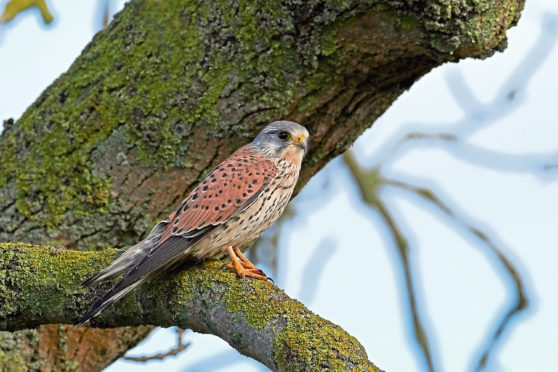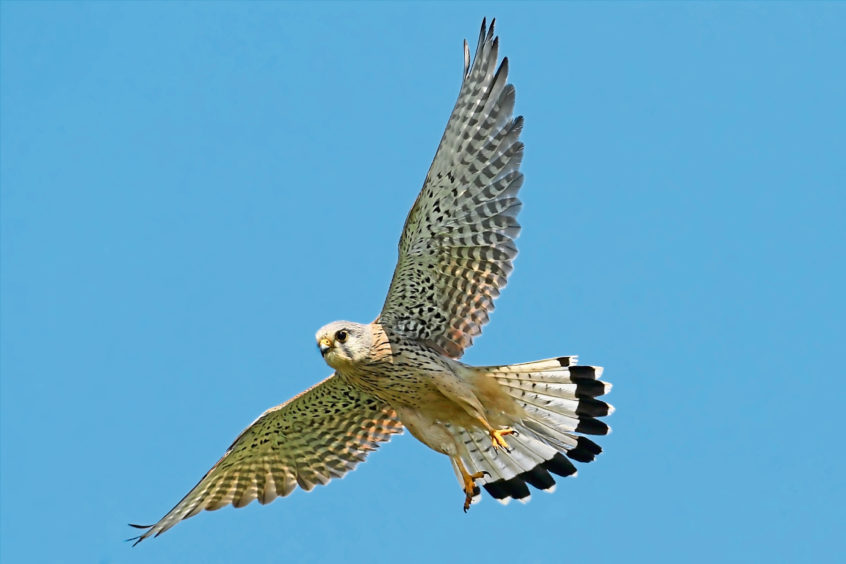Kestrels can be found in a wide variety of habitats, including moorland, farmland, coastal cliffs and in our towns and cities. The field vole is its preferred prey.
Beauty and elegance; terms appropriate for so much of our wildlife, but the other week I saw a bird that transcends all others when it comes to poise and polish.
It was a male kestrel who had alighted in a tree in our garden, enabling an unusually close view. And what a beautiful little falcon he was, with his slate-grey head and tail, combined with wonderful soft-brown back.
But it was the lines, the sleek body lines that really drew the breath away; so slim and beautifully proportioned, with wings folded over back in impeccable symmetry. It was as if some architect of nature had designed the consummate creature.
The bird sat for a while, before taking to the air and sweeping down into nearby woodland. Once he had gone, I reflected upon kestrels and their changing fortunes. As a boy growing up in the 1970s it was our commonest bird of prey, and I forever remember motorway car journeys where kestrels were omnipresent, hovering in search of voles by the grassy verges. Indeed, at one time the bird was even dubbed the ‘motorway falcon’ such was its familiarity. Travel a motorway today and it would be unusual to spot a kestrel.
Why the decline? Well, it is believed a number of factors involved, including changes in farming and forestry practices that has reduced the number of voles for kestrels to prey upon.
I might be wrong, but I suspect it is also no coincidence that the fall in the kestrel’s fortunes has coincided with the rise of the buzzard, which over the last few decades has gone from being a scarce bird to a common one in our countryside. Not only has this resulted in extra competition for food, but I imagine buzzards must also predate upon young kestrels when in the nest. But that’s nature, I suppose.
It certainly seems likely that tree-hole nesting kestrels are more successful than those that habitually use old crows nests because of the better protection offered. I recall several years ago on a barn owl ringing trip finding a kestrel nest in a tree hollow, where inside three white fluffy falcon chicks huddled, their eyes gleaming out. It was a wonderful sight.
A few days after my garden kestrel sighting, I saw another one – a female this time – working her way along a conifer plantation in the Ochils. Like the male from before, she was a study in style and grace, frequently hovering with head pointed downwards as she scrutinised the ground.
Another hover, then down she plunged, disappearing into some spindly spruces. She rose again with talons empty, but that didn’t mean the hunt had been unsuccessful, for it was entirely possible she had snaffled a worm and gulped it down before taking flight.
She fluttered higher into the air before vanishing behind the spur of a hill. What a magnificent bird, I thought, a little treasure of our landscape and the very picture of natural perfection.











